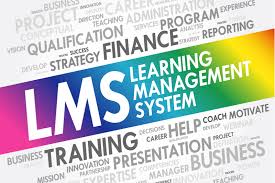The Employee Net Promoter Score (eNPS) is a vital metric in measuring employee satisfaction and engagement within an organization. It provides valuable insights into the overall employee experience and helps organizations identify areas for improvement. In this blog, we will delve into eNPS questions, why they are important, and how they can be used to enhance the workplace.
What is eNPS?
eNPS is a variation of the Net Promoter Score (NPS), a customer loyalty metric introduced by Fred Reichheld. While NPS is traditionally used to gauge customer loyalty and satisfaction, eNPS is adapted for employee engagement. It is a simple yet powerful tool to measure how likely employees are to recommend their organization as a great place to work.
eNPS Question Format
The eNPS survey typically consists of a single question that employees are asked to answer on a scale of 0 to 10. The question is usually framed as follows:
“On a scale of 0 to 10, how likely are you to recommend [Your Company] as a great place to work?”
Based on their responses, employees are categorized into three groups:
- Promoters (Scores 9-10): These are highly satisfied and engaged employees who are likely to promote the organization and its values.
- Passives (Scores 7-8): These employees are relatively satisfied but not as enthusiastic as promoters. They may or may not actively recommend the organization.
- Detractors (Scores 0-6): These employees are dissatisfied and are unlikely to recommend the organization. They may even share negative feedback.
The Importance of eNPS Questions
- Simplicity: The eNPS question is straightforward and easy to answer, making it less burdensome for employees. This simplicity encourages higher participation rates.
- Quantifiable Data: The numerical scale provides quantifiable data, allowing organizations to track changes in employee sentiment over time. It serves as a measurable benchmark.
- Benchmarking: eNPS results can be benchmarked against industry standards or used as a basis for internal comparisons within the organization.
- Quick Insights: eNPS allows for rapid data collection, providing real-time insights into employee satisfaction and engagement.
- Actionable Feedback: Beyond the numeric score, eNPS provides qualitative feedback that can be used to identify specific areas that need improvement. This feedback can guide strategic decisions.
Using eNPS to Enhance the Workplace
Once eNPS scores are collected, they can be utilized to enhance the workplace in several ways:
- Identify Areas of Concern: By analyzing eNPS results, organizations can pinpoint the departments or aspects of work that need improvement. This data-driven approach helps in focusing resources on problem areas.
- Engagement Strategies: eNPS results can guide the development of engagement strategies. Organizations can address the concerns and suggestions raised by employees to create a better work environment.
- Communication: The eNPS feedback loop can be used to foster open communication between leadership and employees. Sharing the results and action plans demonstrates transparency and a commitment to positive change.
- Monitoring Progress: Regular eNPS surveys help in monitoring progress and assessing the impact of implemented changes. Organizations can determine if their initiatives have positively affected employee satisfaction.
- Employee Retention: Satisfied and engaged employees are more likely to stay with the organization, reducing turnover rates and associated costs.
- Brand Reputation: High eNPS scores can enhance the organization’s reputation and make it an attractive destination for top talent.
In conclusion, eNPS questions are a valuable tool for understanding and improving employee engagement. They offer a straightforward way to measure employee satisfaction and provide actionable insights for enhancing the workplace. By regularly collecting and analyzing eNPS data, organizations can create a more engaging and satisfying work environment, ultimately leading to increased employee loyalty, productivity, and overall success.






